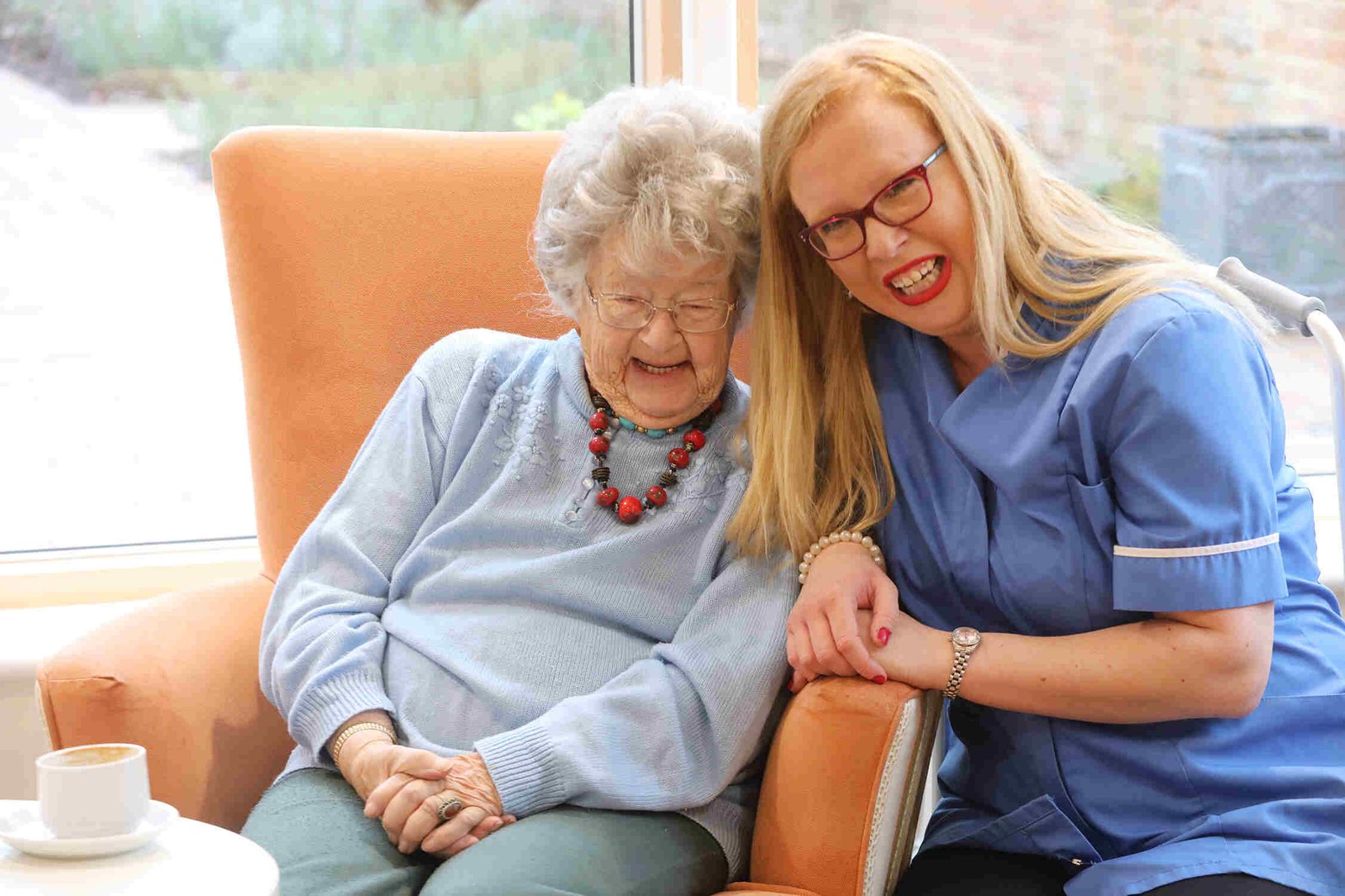Marketing for care homes is a unique challenge. The goal is not just to fill vacancies but to build trust, showcase empathy, and highlight the quality of care provided. Families are looking for a place where their loved ones will be safe, happy, and well-cared for.
Understanding Your Audience
To effectively market a care home, it’s essential to understand your audience. This includes both the potential residents and their families. The decision to move a loved one into a care home is emotional and often stressful.
Knowing their concerns, needs, and what they value most can guide your marketing strategies.
Empathy in Marketing
Show empathy in your marketing messages. Understand that this decision is tough for families. Use language that conveys care, understanding, and support.
Share stories of current residents and how they have thrived in your care. These real-life stories can be powerful and reassuring.
Highlighting Quality of Care
Families want to know that their loved ones will receive the best care possible. Highlight your care home’s quality of care, staff qualifications, and any special programs you offer.
Use testimonials from current residents and their families to provide social proof of your excellence.
Creating Compelling Content
Content is king in the digital marketing world, and this holds true for care homes as well. Your content should aim to educate, inform, and build trust with your audience.
Educational Blog Posts
Create blog posts that address common questions and concerns families have about care homes. Topics could include the benefits of professional care, tips for transitioning to a care home, or how to choose the right care home.
Providing valuable information helps position your care home as an authority and a trustworthy option.
Virtual Tours and Videos
Visual content is incredibly powerful. Create virtual tours of your facility to give prospective residents and their families a feel for the environment.
Videos showcasing daily activities, resident testimonials, and staff interactions can help humanize your care home and build a deeper connection with viewers.
Engaging Social Media
Social media platforms are great for connecting with your audience on a more personal level. Share updates, photos of activities, and success stories on platforms like Facebook and Instagram.
Engage with your followers by responding to comments and messages promptly. This interaction shows that you care about your community and are always there to answer questions.
Leveraging Local SEO
Local SEO is crucial for care homes because families often look for facilities close to their location. Optimizing your online presence for local searches can help attract more visitors to your website and increase inquiries.
Google My Business
Ensure your Google My Business profile is complete and up-to-date. This includes accurate contact information, photos of your facility, and regular updates.
Encourage satisfied families to leave positive reviews, as these can significantly impact your local search ranking and build trust with new prospects.
Local Keywords
Use local keywords in your website content. This includes phrases like “care home in [your city]” or “senior living in [your city].” Localized content helps search engines understand where you are located and can improve your visibility in local searches.
Community Engagement
Engage with your local community both online and offline. Sponsor local events, participate in community activities, and collaborate with local businesses. These efforts not only boost your local SEO but also strengthen your reputation within the community.
Building Trust Through Transparency
Transparency is key in building trust with families considering your care home. Be open about your practices, policies, and any incidents that occur.
This honesty can differentiate you from competitors and build long-term trust.
Open Communication
Encourage open communication with families. Regular updates about their loved ones, transparent billing practices, and being available to answer questions can help build trust and reassure families that their loved ones are in good hands.
Accreditations and Certifications
Highlight any accreditations or certifications your care home has received. These endorsements from reputable organizations can serve as a testament to your quality of care and commitment to high standards.
Engaging with the Community
Engaging with the community is essential for care homes. It helps build relationships and establish your care home as a trusted and integral part of the local area. Community engagement can take many forms, all aimed at fostering a sense of belonging and support.
Community Events
Hosting or participating in local events is a great way to engage with the community. Consider organizing open houses, health fairs, or charity events.
These events can bring people to your care home, allowing them to see your facilities and meet your staff in a relaxed and positive setting.
Educational Workshops
Offer workshops and seminars on topics relevant to the community, such as elder care, health and wellness, or legal issues related to aging.
These events can position your care home as a resource for valuable information and support, further building trust with potential residents and their families.
Volunteer Programs
Encourage community members to volunteer at your care home. This not only provides additional support and companionship for residents but also helps create a positive image of your care home in the community.
Volunteer programs can include reading groups, art classes, or simply spending time with residents.
Personalized Marketing Approaches

Personalized marketing can make your care home stand out by addressing the specific needs and concerns of individual families. Tailored communication shows that you value each potential resident as a unique individual.
Tailored Tours and Visits
Offer personalized tours of your facility that address the specific needs and interests of each family. Customize the tour to highlight aspects of your care home that align with what the family is looking for, whether it’s specialized medical care, recreational activities, or a particular type of accommodation.
Personalized Follow-Up
After an initial visit or inquiry, follow up with personalized communication. Send a thank-you note or email that references specific details discussed during the visit.
This shows that you pay attention and care about their individual concerns.
Customized Care Plans
Showcase your ability to create customized care plans that cater to the unique needs of each resident. Highlight how your care home can adapt to changing needs and provide personalized care that evolves with the resident.
Digital Marketing Strategies
In today’s digital age, having a robust online presence is crucial for care homes. Effective digital marketing strategies can help you reach a broader audience and make a lasting impression.
User-Friendly Website
Ensure your website is user-friendly, easy to navigate, and mobile-responsive. Include clear information about your services, staff, facilities, and how to get in touch.
Make sure your website loads quickly and is accessible to people with disabilities.
Content Marketing
Regularly update your website with valuable content. This could include blog posts, videos, and downloadable resources like checklists or guides.
Consistent content updates not only help with SEO but also provide ongoing value to visitors.
Pay-Per-Click Advertising
Consider investing in pay-per-click (PPC) advertising to increase your visibility online. PPC ads can target specific demographics and geographic areas, ensuring that your marketing efforts reach the right audience.
Nurturing Relationships with Healthcare Providers
Building strong relationships with local healthcare providers can be a valuable marketing strategy for care homes. These professionals often refer patients to care homes and can be influential in the decision-making process.
Referral Programs
Develop a referral program with local hospitals, doctors, and rehabilitation centers. Provide these partners with detailed information about your care home, including brochures and promotional materials, so they can confidently refer patients to you.
Regular Communication
Maintain regular communication with your healthcare partners. Keep them updated on any new services, programs, or changes at your care home.
Building a strong, ongoing relationship can lead to more referrals and a better reputation in the healthcare community.
Joint Events and Seminars
Collaborate with healthcare providers to host joint events and seminars. These can focus on topics like elder care, chronic disease management, or mental health for seniors.
Joint events can provide valuable information to the community and strengthen your partnership with healthcare providers.
Building a Strong Brand
A strong, consistent brand can help your care home stand out and be easily recognizable. Your brand should reflect the core values of your care home and resonate with your target audience.
Consistent Messaging
Ensure that all your marketing materials have consistent messaging that reflects your brand values. Whether it’s your website, brochures, or social media posts, the tone and message should align with your brand.
Visual Identity
Develop a strong visual identity, including a logo, color scheme, and typography. These elements should be used consistently across all marketing materials to create a cohesive brand image.
Storytelling
Use storytelling to bring your brand to life. Share stories of residents, staff, and the positive impact your care home has had on their lives.
Storytelling can make your brand more relatable and memorable.
Measuring and Adapting Your Marketing Efforts
To ensure your marketing strategies are effective, it’s important to measure their impact and adapt as needed. Continuous improvement can help you stay ahead of the competition and meet the evolving needs of your audience.
Tracking Metrics
Use tools like Google Analytics and social media insights to track the performance of your marketing efforts. Monitor metrics such as website traffic, conversion rates, and social media engagement to understand what’s working and what needs improvement.
Feedback from Families
Gather feedback from residents and their families about their experience with your care home and your marketing efforts. Their insights can provide valuable information about what’s resonating and what could be improved.
Adapting Strategies
Based on the data and feedback you gather, be prepared to adapt your marketing strategies. If certain approaches aren’t yielding results, try new tactics and continually refine your efforts to achieve the best outcomes.
Utilizing Social Proof and Testimonials
Social proof is a powerful marketing tool, especially in the context of care homes. Prospective residents and their families want to hear about the experiences of others before making such an important decision. Leveraging testimonials and reviews can significantly boost your credibility.
Resident and Family Testimonials
Collect testimonials from current residents and their families. These should highlight the positive experiences and quality of care provided.
Display these testimonials prominently on your website, in brochures, and across social media channels.
Video Testimonials
Video testimonials can be even more impactful. Seeing and hearing real people share their stories can create an emotional connection with viewers.
Keep these videos authentic and genuine to convey trustworthiness.
Third-Party Reviews
Encourage satisfied families to leave reviews on third-party platforms like Google, Yelp, and care home review sites. These reviews are often perceived as more impartial and can significantly influence the decision-making process of potential residents.
Enhancing the Visitor Experience
First impressions are crucial. The experience visitors have when they come to tour your care home can make or break their decision to choose your facility. Making this experience as positive and informative as possible is key.
Warm Welcome
Ensure visitors are greeted warmly and made to feel comfortable as soon as they arrive. A welcoming atmosphere sets a positive tone for the visit and helps to put families at ease.
Informative Tours
Provide thorough and informative tours of your facility. Highlight key areas, activities, and services that distinguish your care home from others.
Answer questions honestly and provide detailed explanations to help families feel informed and confident.
Follow-Up Communication
After the visit, follow up with families to thank them for their time and address any additional questions they may have. This follow-up shows that you value their interest and are committed to providing excellent service.
Focusing on Resident Well-Being

Marketing strategies should emphasize the overall well-being of residents. Prospective families are looking for a care home that provides a high quality of life, not just basic care.
Holistic Care Approach
Promote your care home’s holistic approach to resident well-being, which includes physical, emotional, and social aspects. Highlight programs and activities that support all aspects of health and happiness, such as fitness classes, mental health support, and social events.
Quality Nutrition
Emphasize the quality and variety of meals provided at your care home. Share menus, photos of meals, and details about your nutrition programs.
Good nutrition is a major concern for families and showcasing your commitment to healthy eating can be very persuasive.
Social Activities
Showcase the range of social activities and events your care home offers. Whether it’s game nights, arts and crafts, or outings, these activities can greatly enhance the quality of life for residents.
Sharing photos and stories of these events can illustrate a vibrant and active community.
Building a Strong Online Presence
A strong online presence is essential in today’s digital age. Potential residents and their families will likely start their search online, so having a robust digital footprint can help you stand out.
Optimized Website
Your website should be optimized for both search engines and user experience. This means having a clean, easy-to-navigate design, fast loading times, and mobile responsiveness.
Make sure important information is easy to find and that the site includes clear calls-to-action.
Engaging Social Media
Maintain active social media profiles on platforms like Facebook, Instagram, and LinkedIn. Regularly post updates, photos, and engaging content that highlights life at your care home.
Use these platforms to interact with followers and respond to inquiries promptly.
Content Marketing
Implement a content marketing strategy that includes regular blog posts, articles, and downloadable resources. These should be focused on topics relevant to your audience, such as elder care tips, health advice, and stories from your care home.
Quality content can help establish your care home as an authority in the field and drive organic traffic to your website.
Leveraging Email Marketing
Email marketing is an effective way to stay in touch with potential residents and their families. Regular, thoughtful communication can keep your care home top-of-mind and build a relationship over time.
Newsletter Campaigns
Create a monthly or bi-monthly newsletter that includes updates about your care home, resident stories, and useful information about elder care.
This keeps your audience informed and engaged with your brand.
Personalized Emails
Send personalized follow-up emails after tours or inquiries. These should address specific questions or concerns the family had and provide additional information that might help them in their decision-making process.
Special Offers and Updates
Use email to inform families about special offers, new services, or upcoming events at your care home. Timely and relevant updates can prompt action and keep your audience interested.
Collaborating with Influencers and Advocates
Influencer marketing isn’t just for consumer products. Collaborating with influencers and advocates in the elder care community can expand your reach and enhance your credibility.
Elder Care Influencers
Identify and collaborate with influencers who focus on elder care and senior living. These could be bloggers, social media personalities, or industry experts.
Their endorsement can help you reach a larger audience and build trust.
Community Advocates
Work with local community leaders and advocates who can speak positively about your care home. This could include healthcare professionals, social workers, or elder care organizations.
Their support can lend additional credibility and attract more referrals.
Resident and Family Advocates
Encourage satisfied residents and their families to become advocates for your care home. Their personal stories and positive experiences can be powerful endorsements.
Provide them with resources and incentives to share their stories on social media and review sites.
Continuous Improvement and Feedback

Continuous improvement is essential for maintaining high standards and staying competitive. Regularly seeking feedback and making necessary adjustments can help you meet the evolving needs of residents and their families.
Resident Surveys
Conduct regular surveys with residents to gather feedback on their experience and satisfaction. Use this feedback to make improvements and address any issues promptly.
Family Feedback
Seek feedback from families through surveys, focus groups, or informal conversations. Their perspective can provide valuable insights into areas where your care home excels and where there might be room for improvement.
Staff Input
Include your staff in the feedback loop. They interact with residents daily and can provide important insights into how to improve care and operations.
Encouraging their input can also boost morale and foster a sense of ownership and pride in their work.
Wrapping it up
Marketing for care homes requires a unique approach that combines empathy, trust-building, and strategic digital tactics. By understanding the needs and concerns of potential residents and their families, creating compelling and personalized content, leveraging local SEO, and employing advanced digital marketing strategies, care homes can effectively reach and engage their audience.
A strong online presence, built through consistent and authentic content, engaging social media practices, and data-driven decision-making, can differentiate your care home in a competitive market.
By implementing these strategies, care homes can not only attract more inquiries but also build lasting relationships with residents and their families, fostering a sense of community and trust.
READ NEXT:
- Festive and Fun Social Media Content Ideas for December
- Gratitude and Growth: Thanksgiving Social Media Post Ideas for Businesses
- Creative Design Ideas to Elevate Your Social Media
- Exploring the Impact of Social Media on Mental Health
- Adventurous Social Media Content Ideas for Travel Agents






















Comments are closed.